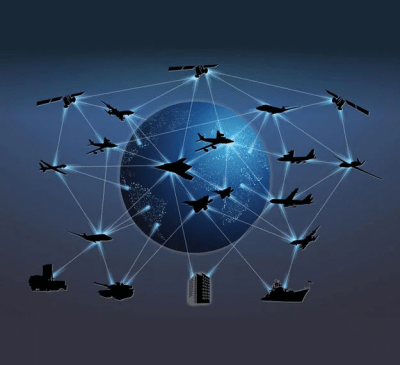Integration of Artificial Intelligence into the US Intelligence System: An Analysis of the Current Situation of Artificial Intelligence Enhancing Signals Intelligence
As we all know, the U.S. intelligence community has used various forms of artificial intelligence technology to improve the efficiency of its intelligence work. With the development of communication technology, signals intelligence can collect electronic signals and communication signals from all over the world. As a traditional intelligence method, it has gradually penetrated into the field of network attack and defense, and has become an important part of intelligence work in the information age.

1. Enhance network attack and defense capabilities
The CIA has long deployed artificial intelligence applications in the field of network security through the InQ-Tel Fund, and developed two platforms, Palantir Gotham and Palantir Foundry, which help intelligence agencies identify false information, understand and defend against cyber attacks. The National Security Agency (NSA), the professional signals intelligence agency of the U.S. intelligence community, is also exploring the use of artificial intelligence to detect vulnerabilities.
Cyber attack and defense are a pair of spear and shield. In essence, network attack and defense is just a reverse confrontation, and there is no big difference in technology. By improving network monitoring and rapid threat identification, the attack properties on vulnerable networks will be substantially improved. The NSA is also using artificial intelligence to model and analyze a large amount of network data it collects, trying to discover network loopholes in foreign intelligence systems, and provide guidance for injecting deceptive information or launching network attacks.
In routine exercises such as "Cyber Storm" and "Cyber Guardian" in the United States, the cyber squad collects information such as the scale and threat level of the imaginary enemy by sending intelligent network "phishing emails", and seeks to obtain more detailed target information by sending malicious files. However, artificial intelligence needs repeated training with a large number of samples to adapt to the variability and complexity of network data, and this kind of artificial intelligence network attack and defense can still only be adaptable to known attack modes. They have uncertainty in identifying new attack patterns that have not been discovered before, so strengthening deep learning to explore automatic recognition of diverse attack patterns is a technical problem that must be overcome in the future.
2. Strengthen the perception of signals intelligence
During World War II, radio signals used for tactical communications were probably the only source of signals intelligence. Intelligence agencies rely on a handful of equipment and analysts to get the job done. Today, the proliferation of civilian wireless and non-communication electronic signals makes it more difficult for intelligence agencies to collect intelligence in complex electromagnetic signals. Different from open source intelligence, except for communication data, the electromagnetic signals collected by signals intelligence are often manifested as symbols and codes, most of which are not visible and readable. This determines that artificial intelligence algorithms have a stronger perception of signals intelligence than analysts. By learning historical data and training repeatedly, artificial intelligence and deep learning technology can make software process signals much faster than hand-written algorithms.
For example, deep learning-based commercial RF sensing technology is used in the OmniSIG sensor software of DeepSig Corporation of the United States. With the automatic feature learning function of deep learning, the OmniSIG sensor can recognize new signal types after a few seconds of signal capture and training. The "Signal EyeTM: Signal Intelligence for Machine Learning Automation" report released by General Dynamics in May 2019 also stated that the SignalEye software designed by the company can speed up signal detection and classification through machine learning algorithms, and realize automatic capture of electromagnetic signals. In the end, it can achieve higher efficiency than manual processing. In general, for raw signals intelligence data, machine algorithms based on digital codes have a more direct perception than humans, so the automatic processing of artificial intelligence can greatly improve the efficiency of signals intelligence processing. From this perspective, signals intelligence may be one of the few intelligence categories in which artificial intelligence can play a major role in the US intelligence system in the future.
【Dark Web】●5 Awesome Dark Web Links
【Artificial Intelligence】●Advanced tips for using ChatGPT-4
銆怰esources銆戔棌The 27 most popular AI Tools in 2023
【Web Intelligence Monitoring】●Advantages of open source intelligence
【News】●AI-generated fake image of Pentagon explosion goes viral on Twitter
銆怤etwork Security銆戔棌9 popular malicious Chrome extensions
銆怤ews銆戔棌Access control giant hit by ransom attack, NATO, Alibaba, Thales and others affected



